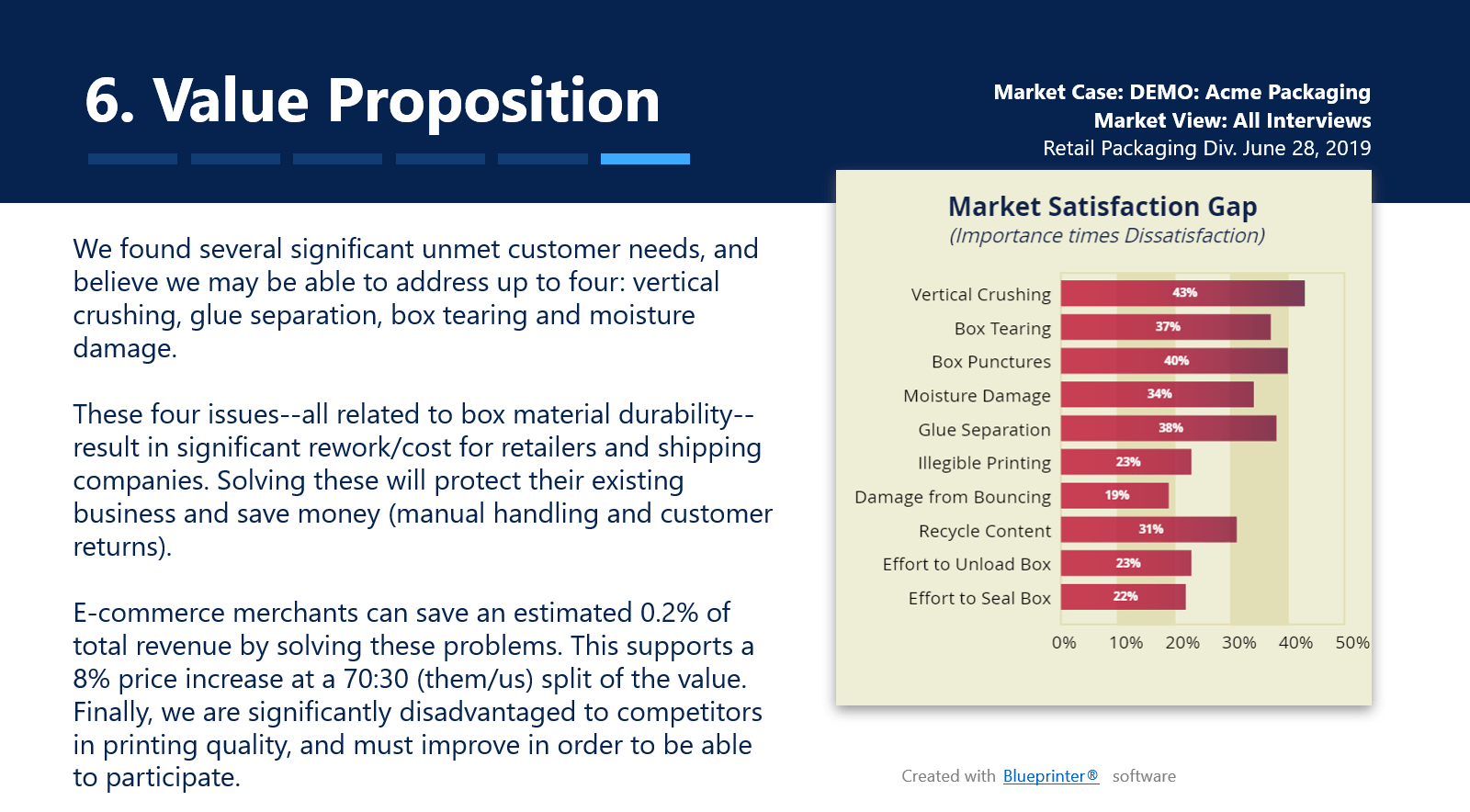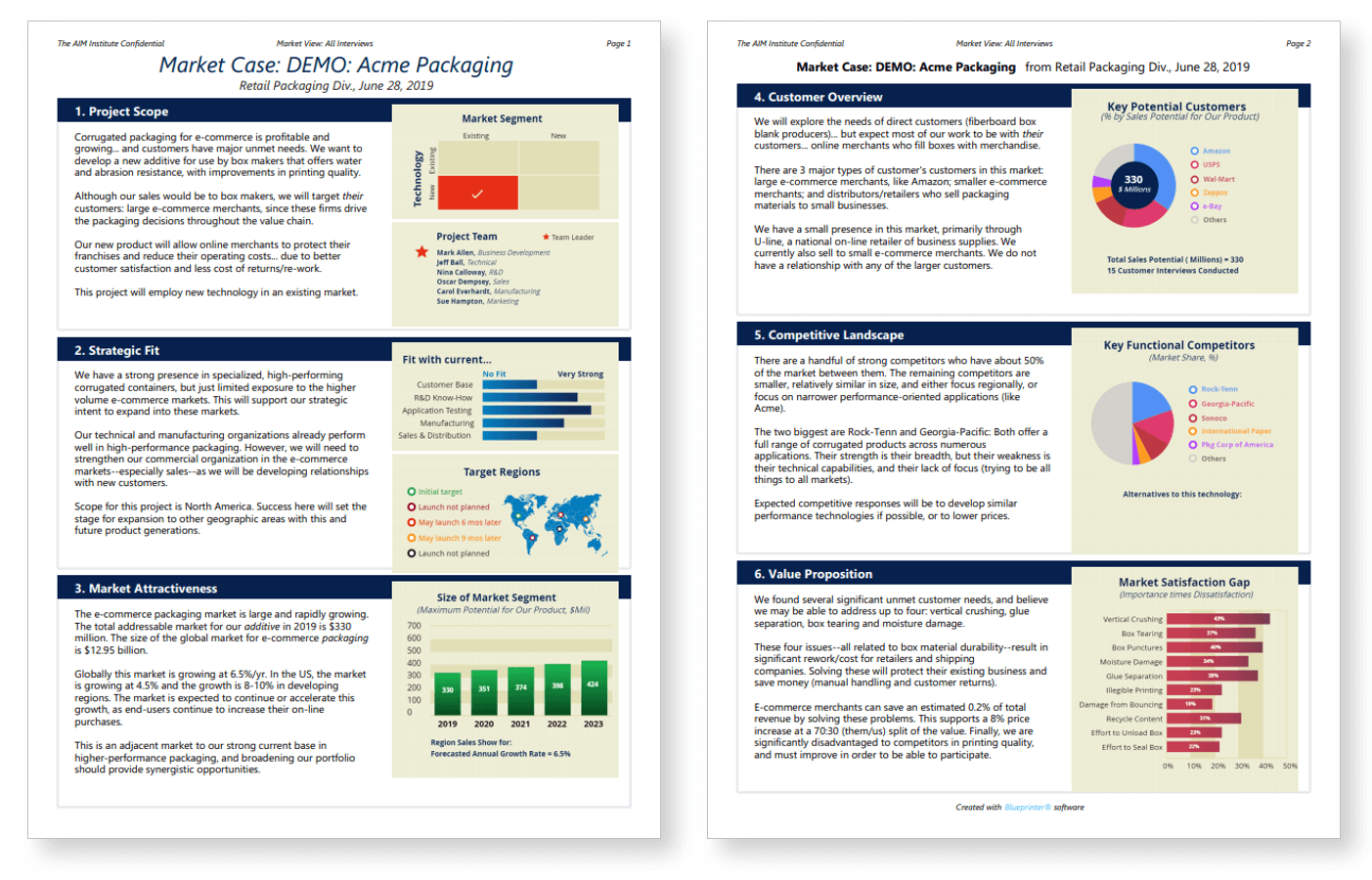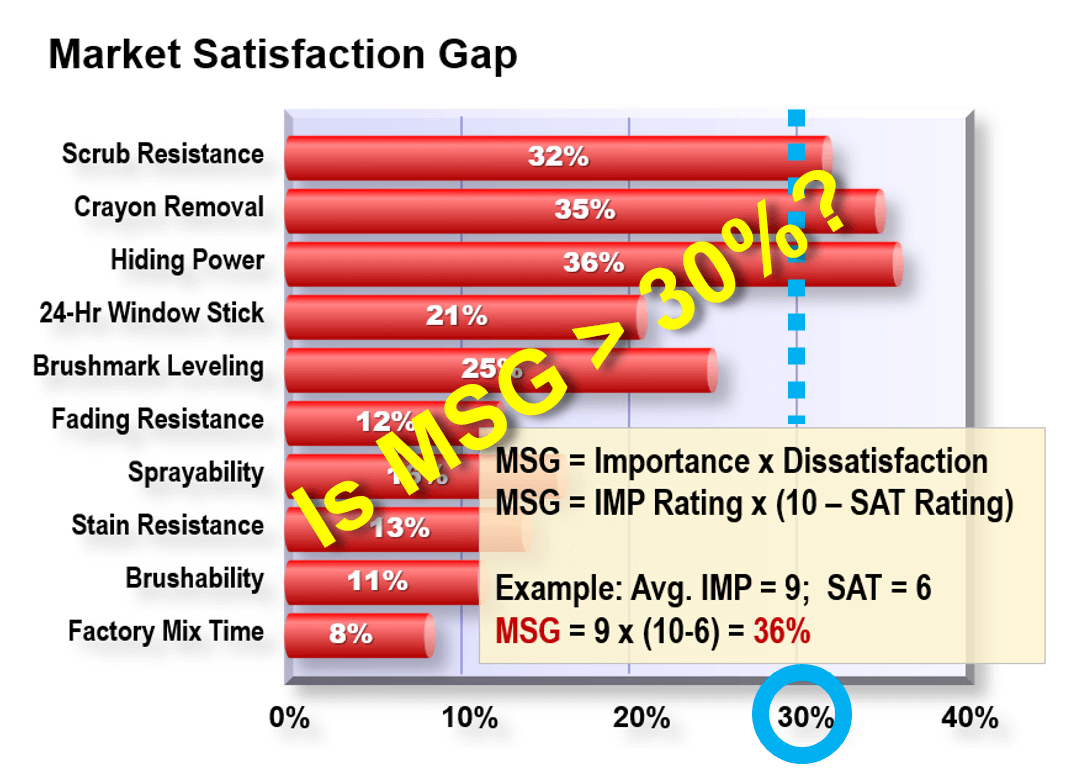Business Case Excellence: The 12 Key Components

We’ll examine 12 parts of a B2B business case format used by more than a thousand new-product teams. Our research will show you which sections are the most critical… including the part teams bungle most often. Do 12 parts seem like too many? We’ll close with a sensible business case “short-cut,” the 6-part market case.
This business case is designed for B2B new-product development teams ready to wrap up the front-end of innovation. If management approves it, they’ll proceed to the development stage, which usually requires costly lab-work by scarce resources. So getting this right boosts your R&D productivity. Even more important, it is critical to your profitable, sustainable organic growth… as we shall see.
You might want to alter this business case format, but probably not much. Why? We’ve taught this methodology to thousands of professionals in the largest B2B companies around the world—as part of the New Product Blueprinting process—and they nearly always use it “as is.” Let’s look at each part…
Everything begins with segmentation. Click here to read “The Magic of Market Segmentation.”
12 Parts of a strong B2B business case
1. Project Scope: In this section, you briefly describe your project. Begin with a single sentence capturing the scope of your proposed new product. Address the following points: what is to be developed… who will buy this… how the product will be used… why customers will buy it… and type of new product (incremental, next-generation or breakthrough). You want management to be excited about your project. If this part of your business case doesn’t get the reader’s blood pumping, spend more time on it.
If this part of your business case doesn’t get the reader’s blood pumping, spend more time on it.
2. Strategic Fit: This portion of your business case reveals if the project is consistent with your business’s strategy and capabilities. Breakthrough products often require new capabilities. That’s OK, but management must understand this so they can be acquired in time. Address fit with current customer base… R&D know-how… application testing… manufacturing… and sales/distribution. If important capabilities are lacking, you should explain how they will be acquired. Also address the global scope of the project.
3. Market Segment Attractiveness: This section explains whether this is an existing or unfamiliar market segment for your company. Describe market segment attractiveness here by covering the following points: your current market share… your familiarity with the market… available market potential… market growth rate… market trends affecting the market’s growth… opportunities and threats… and any market variations from region to region.

4. Customer Overview: Describe the major customers and prospects in this market segment. This business case section should identify your existing customers, if any. Characterize key prospects and the likelihood of them buying your new product. Identify any charter customer(s) with whom you will work closely. Specify how many qualitative Discovery and quantitative Preference interviews your team has conducted. Review the customer reactions you received during your interviews.
5. Competitive Landscape: Classify competitors into two categories: a) direct competitors that make products like yours, and b) competing technologies customers might turn to. This section should also cover these points: Describe the level of competitive intensity. What are the capabilities and competitive intent of key rivals? Depict how the most important competitive offerings are viewed by this market. Anticipate competitive reactions you might stimulate.
6. Value Proposition: This is the most critical section of your business case. Why will customers buy your new product instead of competitors’? It’s important to explain the specific outcomes (desired end-results) customers will receive from your new product. Cover both value creation and value capture:
- Value creation: How eager are customers for the outcomes your new product addresses… and why? How do you know customers want the outcomes you think they want? We recommend showing quantitative, unbiased data direct from customers, e.g. a Market Satisfaction Gap profile (discussed later).
- Value capture: Explain how you will price your new product. Will you use a value calculator to convince customers of the value they’ll receive? Also address human behavior, such as the risk and effort customers must face before buying your product.

7. New Product Design: This section describes how you’ll deliver the value proposition through your product design. Explain why you selected these customer outcomes to pursue with your new product design. Compare your new design to the top competitive products currently available. Estimate the new product’s commercial probability of success if these technical objectives are met. Review any likely customer objections.
How do you know customers want the outcomes you think they want?
8. Technical Path: Conduct solution brainstorming before drafting your business case, and then describe two-to-three promising technical paths here. Identify major advantages and disadvantages of each solution. Describe how you will acquire the needed capabilities or technology. Explain how you will protect your new product from re-engineering or other competitive thrusts. Identify the type of patent coverage—if any—you intend to pursue. Estimate the probability of technical success.
9. Project Plan: This section lays out the major multi-functional tasks you’ll perform after approval. Explain which tasks are most critical and any resource issues you foresee. Review what might cause your project to fall behind schedule. If there is upside potential to accelerate development, explain how it could be done. Describe any departures from typical supply chain and manufacturing operations. Provide the estimated product launch date, and briefly describe your launch plan.
10. Major Risks: Here your team considers two-to-three most likely “showstoppers”—events that could seriously delay or shelve the project. For each, describe the nature of the show-stopper and its likely impact… how your team plans to overcome or mitigate the show-stopper’s impact… and early warning signs of show-stoppers. Also describe any risk exposure your company will have regarding health/safety/environmental, regulatory, patent infringement, product liability or other matters.
11. Financial Plan: This part includes your income statement projections. Provide the composition of project-related costs, and give the reason(s) for any capital requests. Provide the approximate IRR and NPV, and identify which variables these are most sensitive to, e.g. sales volume or price. Explain any projected profit margins that are atypical for your business. Provide best-case and worst-case scenarios for revenue and net operating profits.
12. Management Approval: In this final part of your business case, you should request all management decisions your team needs to succeed:
- Approval to proceed (or not): If your company uses a stage-and-gate process,
this approval allows you to enter the development stage. - Approval for resources: Specify the work to be done by these resources.
- Approval for other changes: Include organizational changes, relief from other assignments, etc.
- Next checkpoint: When should management expect an update, who will schedule it, and what will be reviewed?
Which part of a business case is most critical… and most often bungled?
They rated a strong value proposition as the #1 most important driver of profitable, sustainable organic growth out of 24 drivers. As you just saw, “Value Proposition” is the sixth section of our business case. But what makes it strong? Certainly not the supplier’s opinion. A value proposition is only strong if it addresses an outcome that was both important and unsatisfied to the customer.
They guess, hope, or hypothesize which outcomes customers desire most.
Instead, use Preference interviews and ask customers to rate outcomes on a 1-to-10 scale for both importance and satisfaction. This generates a Market Satisfaction Gap for each outcome. Customers are only eager for improvement if the Gap is over 30%. These are outcomes both important and currently unsatisfied… the only thing they might pay you a premium to improve.
The market case… a sensible short-cut to the business case
I’m generally not a fan of short-cuts, especially in the critical front-end of innovation. But the market case—which contains just the first 6 sections of the full business case—can be justified in some situations. But first, let’s check the research.
Wouldn’t it be nice if we had data showing which behaviors most strongly differentiate winners from losers in B2B front-end innovation? We do. Since research shows “value propositions” to be the #1 driver of strong organic growth, we’ll say “winners” consistently develop high-value value propositions… and “losers” do not. Here are the 3 growth drivers (out of 24) that show the greatest differentiation in competency levels between winners and losers (from What Drivers B2B Organic Growth, page 10).
- #1: Front-end work: This is everything you do to create a compelling business
case. Good news: There’s nothing more important for driving organic growth in your business! - #2: Market concentration: Think of this as market segmentation “plus.” It’s not
just segmenting “clusters of customers with similar needs.” It’s also disproportionately focusing your resources on the attractive segments. - #3: Customer interviews: This is what feeds your value proposition. First diverge to hear all customer outcomes in Discovery interviews…and then use Preference interviews to converge on just the important, unsatisfied outcomes.
If you create a market case, you will address most of #1 above in your six sections. You’ll certainly deal with #2 above in section 3, Market Segment Attractiveness. And you will use the results of #3 above in section 6, Value Proposition.

Will a full business case do more for you? Sure… you’ll have a detailed product design with a clear path for how to achieve it. But a well-written market case alone does a lot. It says, “We know this is an attractive market segment, and we know exactly what its customers want.” Not bad, right? This will put your team far ahead of the average B2B new-product team.
How do you decide if you should do a full business case or stop with a market case? Years ago, a study by the American Productivity and Quality Center found the most successful teams invest 20+% of their total new-product work in the front-end… while most teams spend 10% or less in the front-end. Let’s apply their research here.
Roughly speaking, a market case requires about 3 person-months of effort, while a business case needs about 6 person-months. So here’s our “starting point” guide:
- For projects requiring 1 person-year of development, build a market case. (3
months divided by 15 months = 20%.) - For projects needing 2+ person-years of development, build a business case. (6 months divided by 30 months = 20%.)
Learning more…
To understand how the business case fits into a broader innovation process, check out our key reference, New Product Blueprinting. If you’d like to receive a free sample of a market case, just contact us. And if you want to make your life really easy, check out Blueprinter software. This software automatically generates a market case after the team follows a proven road map for the front end of innovation.
Download a free sample of a Market Case.
I wish you great success in your business cases… your value propositions… and your profitable, sustainable organic growth!

Comments